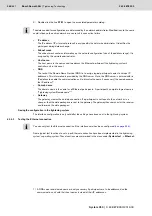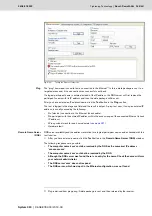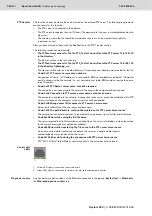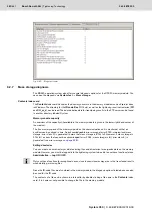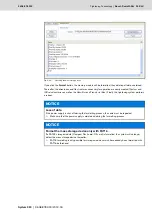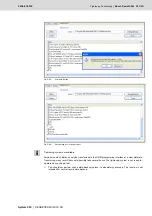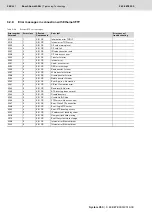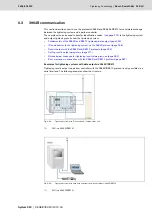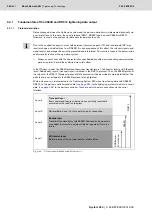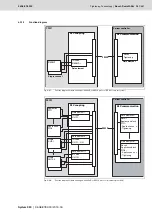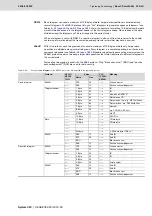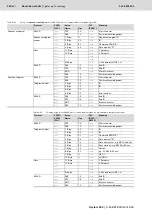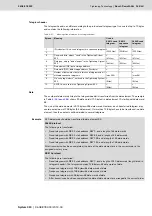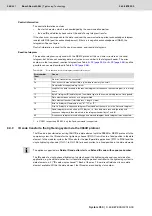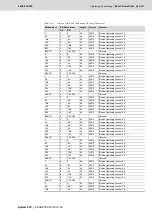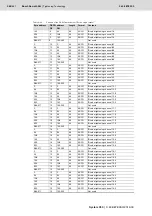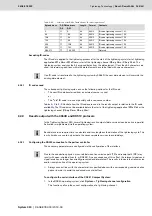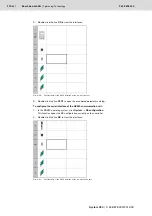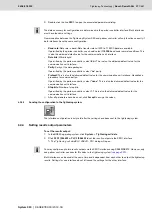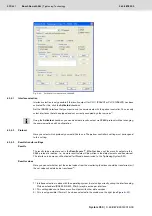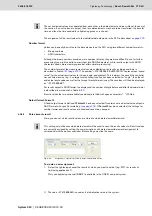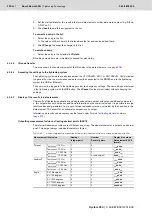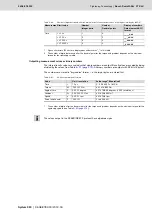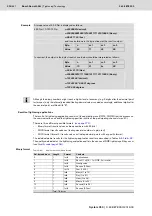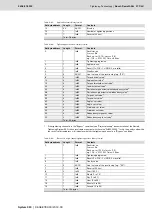
262
Bosch Rexroth AG
| Tightening Technology
3 608 878 300
System 350
| 3 608 878 300/2019-03
6.3.1.3
Exchanged data
Tightening results are output for each tightening process or application and tightening channel. This is
why a clear identification of the tightening results is necessary, to be able to e.g. assign archived
tightening results at a later point. The Tightening System 350 enables identification of every tightening
result record with an identification code (ID code) provided by the partner controller
1)
.
The 3964R/RK512 protocol can be used to transfer the ID-codes to the tightening system and also to
send tightening results to the partner controller.
Various partner controllers can be used to identify and store tightening results. Two connections can be
activated for the 3964R/RK512 protocols.
6.3.1.4
Storage organization for ID-codes and results data transfer
So-called data elements are used for data addressing. Here, the memory area reserved for data exchange
is divided into blocks of 512 bytes. DE numbers (DE = data element) and DW numbers (DW = data word
= 2 bytes) are used for addressing data in and to data elements. The target address comprising DE and
DW numbers is listed in the telegram header when transferring data. This option ensures that the target
address is always clearly specified.
The input data field in the tightening system is configured using data elements so that the partner
controller can save ID-codes in this format. The partner controller has to have a similarly configured
memory for the tightening system to file tightening results there.
:
6.3.1.5
Data block setup (telegrams)
The data blocks or telegrams describe how the data to be transferred should be packed so that they can
be correctly assigned once they reach the communication partner. The telegram contains the data as well
as a telegram header and the control data needed to connect and disconnect the connection (backup
layer).
The 3964R and RK512 telegrams have a similar structure, but some of the functions are not integrated
in the 3964R.
1) The ID-code may contain up to 64 ASCII characters, such as e.g. a workpiece number, production
number, serial number, chassis number, etc.
Example
A 128kB linear memory is divided into 256 data elements with 512 bytes (corresponds to 256 data
words). The first word (2 bytes) of the first data element thus has the address DB=0, DW=0. The last
2 bytes of the memory area have the address DE=255, DW=255.
Fig. 6–39:
Division of the memory area into data elements and data words
The data to be transferred (ID-codes or tightening results) are entered into the data elements according
to a fixed scheme (this can be configured for the tightening results). Afterwards, the data elements are
transferred to the communication partner.
Data word
0
1
2
3
4
5
253 254 255
Data element 0
Data element 1
Data element 2
Data element 254
Data element 255
Summary of Contents for Rexroth Tightening System 350
Page 4: ...4 641 Bosch Rexroth AG Schraubtechnik System 350 3 608 878 300 2019 03 ...
Page 120: ...120 641 Bosch Rexroth AG Tightening Technology 3 608 878 300 System 350 3 608 878 300 2019 03 ...
Page 194: ...194 641 Bosch Rexroth AG Tightening Technology 3 608 878 300 System 350 3 608 878 300 2019 03 ...
Page 638: ...638 641 Bosch Rexroth AG Tightening Technology 3 608 878 300 System 350 3 608 878 300 2019 03 ...

